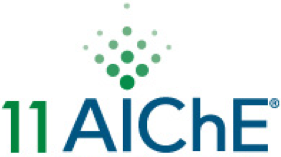

Algae have recently received much attention due to their potential as a source of clean biofuel. One of the key economic hurdles in the production of biofuel from algal feedstocks continues to be the harvesting process. Flocculation shows great potential for lowering the economic hurdle by providing a low energy, inexpensive method of separation. However, the mechanism of flocculation under varying environmental conditions is poorly understood. We aim to gain greater insight into the flocculation process by developing fundamental science-based models based on experimental measurements of floc formation and characteristics under a variety of environmental conditions (i.e., shear fields, flocculant addition, pH adjustment, etc.).
Two critical conditions for flocculation with efficiencies above 90% with ferric chloride are identified for the freshwater alga Chlorella zofingiensis. First, a minimum amount of ferric chloride must be present in solution. The minimum amount of ferric chloride depends linearly on algae concentration for cell concentrations below 0.5 g/L (dry weight). Above 0.5 g/L algae, the amount of ferric chloride required for effective flocculation is independent of algae concentration. The change in dependence of flocculant dose on algae concentration suggests a shift in dominant flocculation mechanism. Second, the algae must carry a negative surface charge. The surface charge of the algae cells is tuned by adjusting the solution pH. For C. zofingiensis, negative surface charge is obtained when pH > 4.1. When the conditions of sufficient flocculant and negative algae surface charge are met, flocculation efficiencies greater than 90% are achieved.
Experimental data for Chlorella zofingiensis are used to develop a predictive flocculation model based on the surface characteristics of a given alga that is expected to apply to any freshwater algae species. The model allows prediction of solution conditions (i.e., pH, ionic content, charge ratios) and flocculant selection that will result in effective flocculation for a given algae strain. The flocculation model developed here has the potential to substantially reduce the time and resources dedicated to experimental studies of flocculation for a given algae strain.
Sandia National Laboratories is a multi-program laboratory operated by Sandia Corporation, a wholly owned subsidiary of Lockheed Martin Corporation, for the U.S. Department of Energy’s National Nuclear Security Administration under contract DE-AC04-94AL85000.
